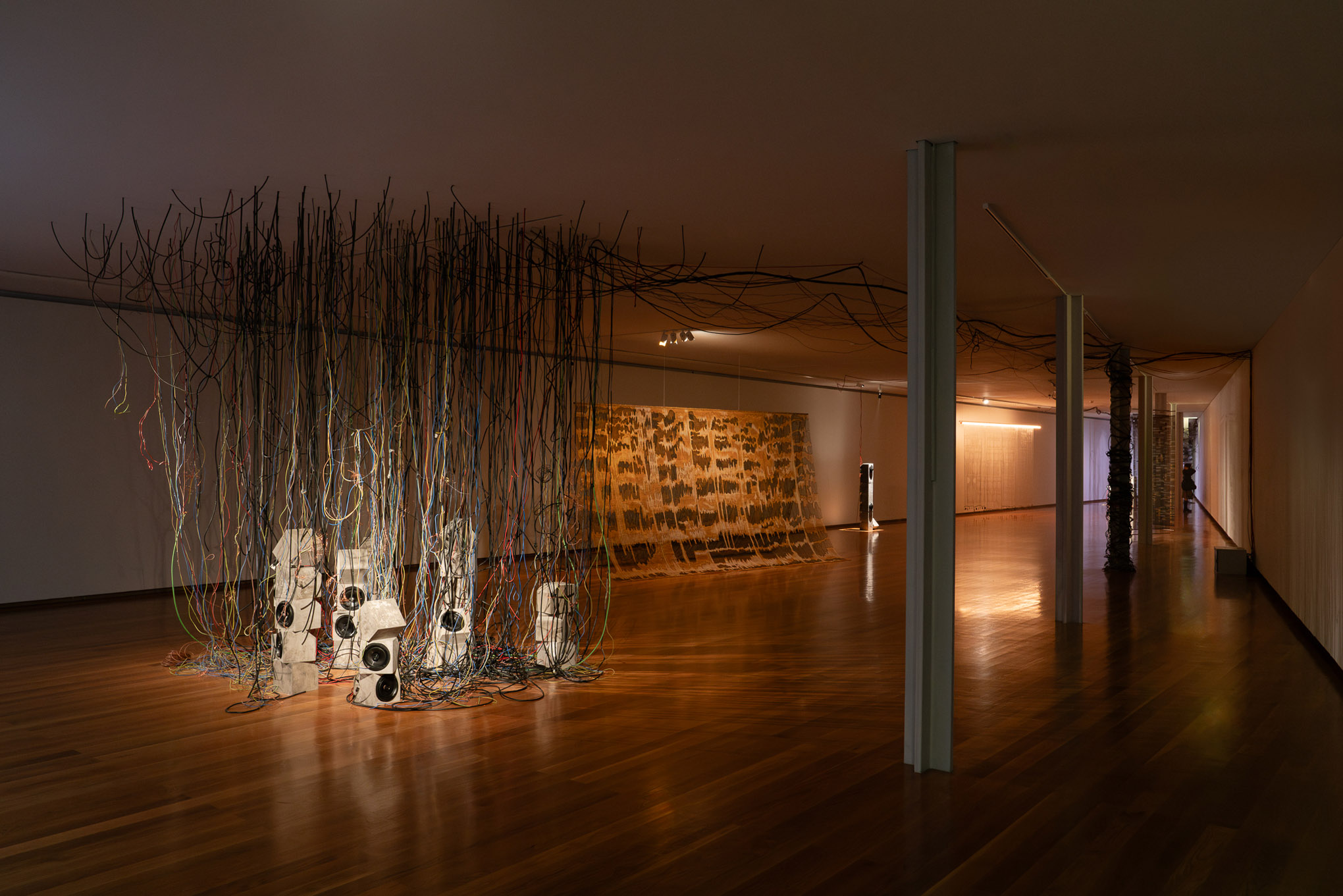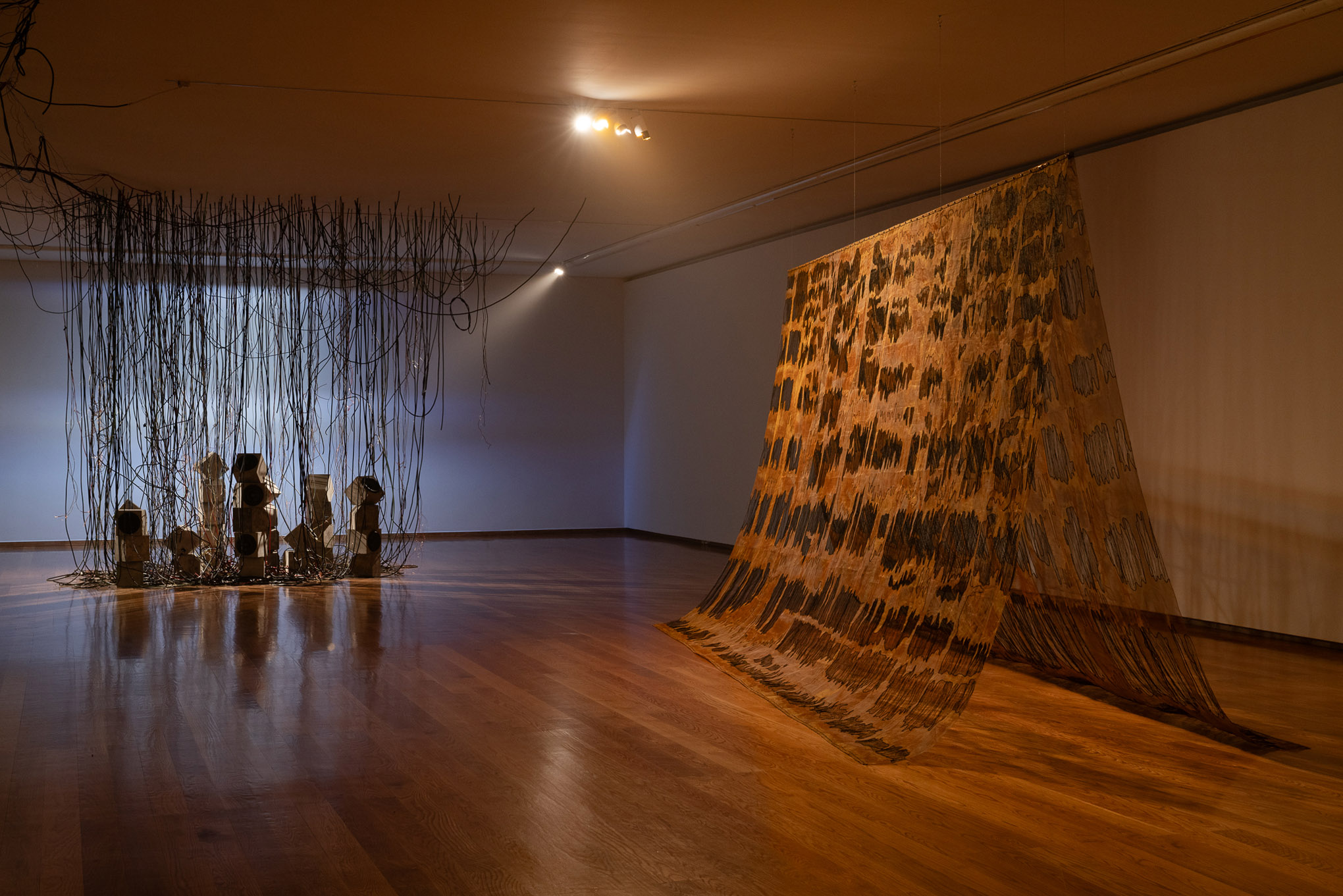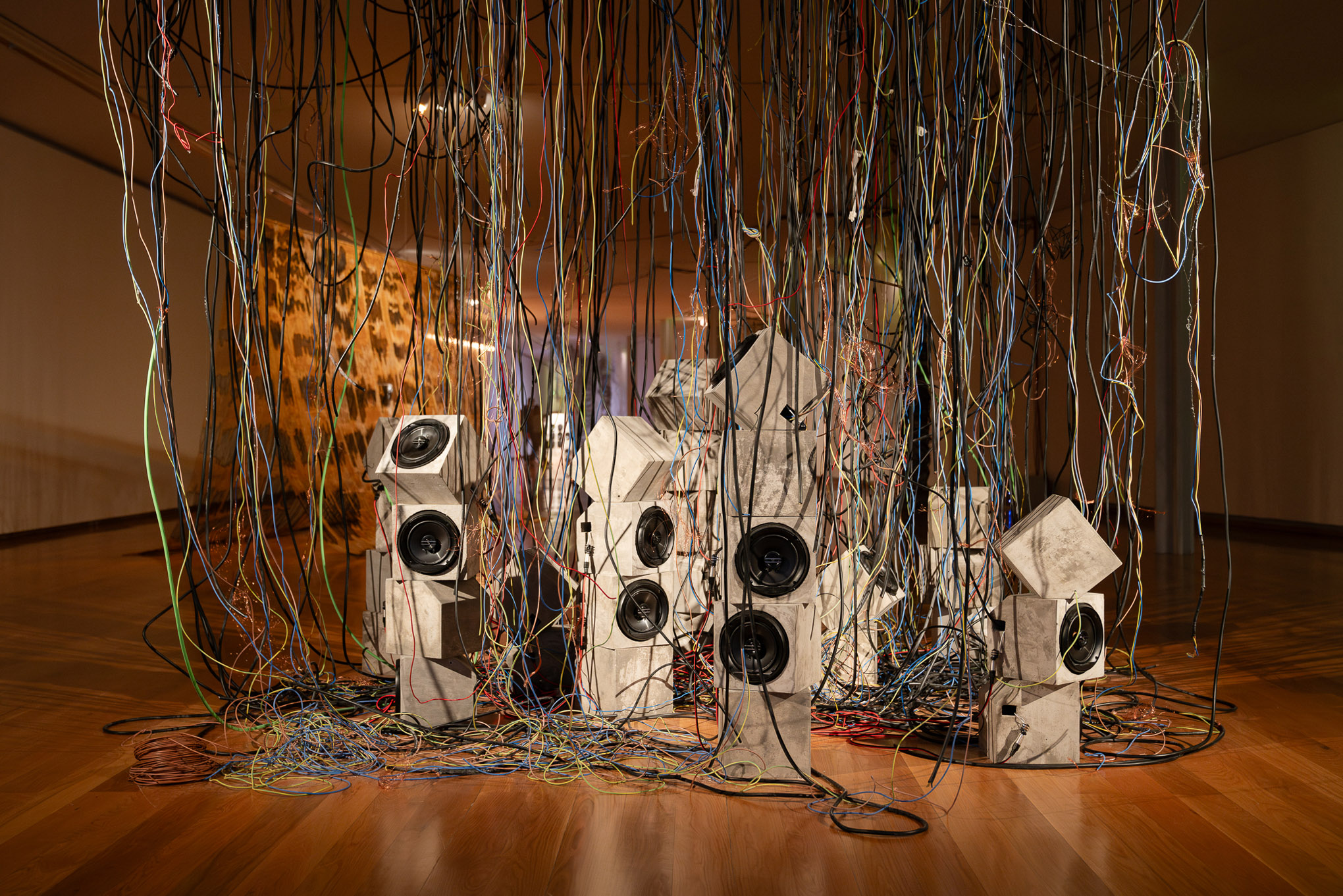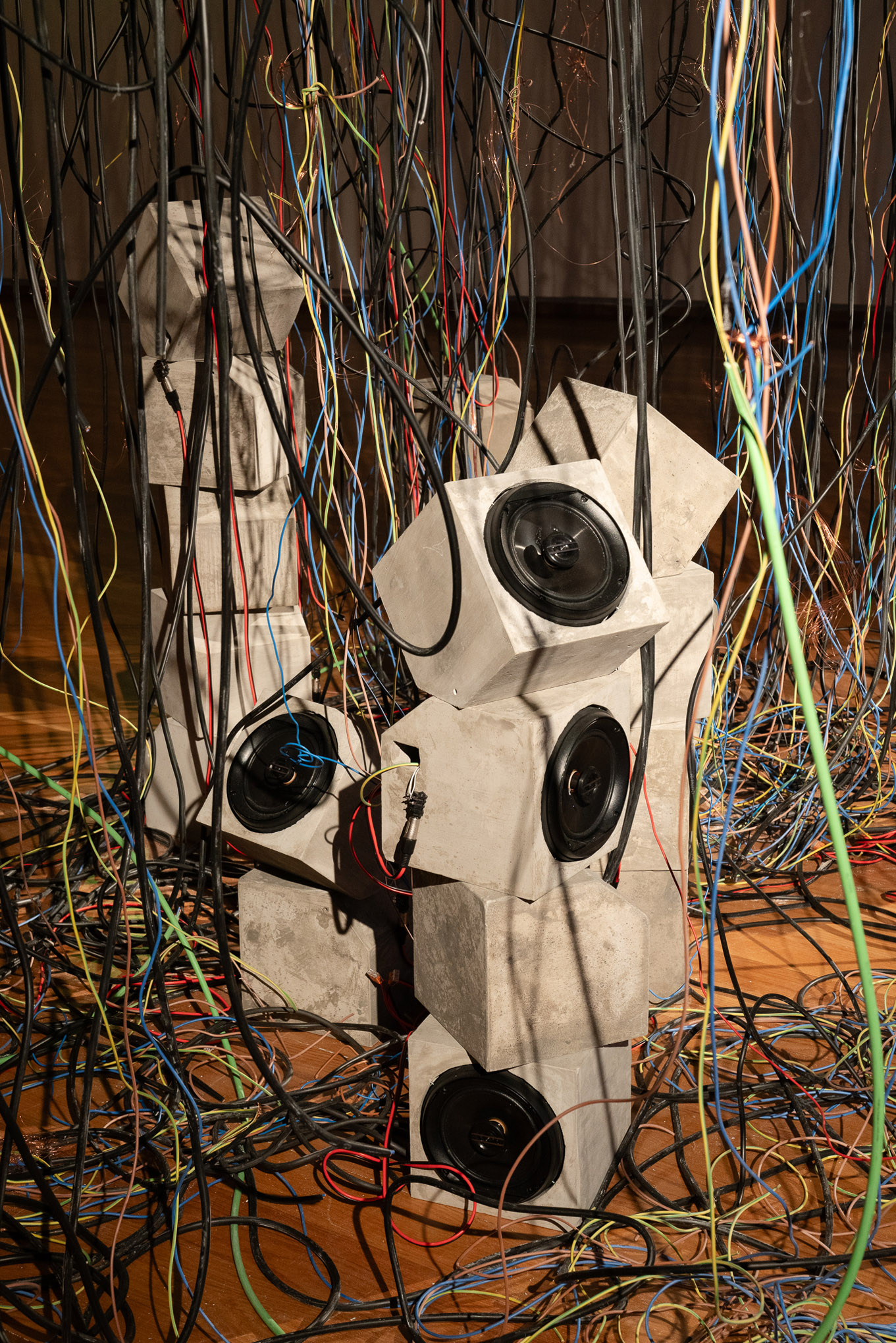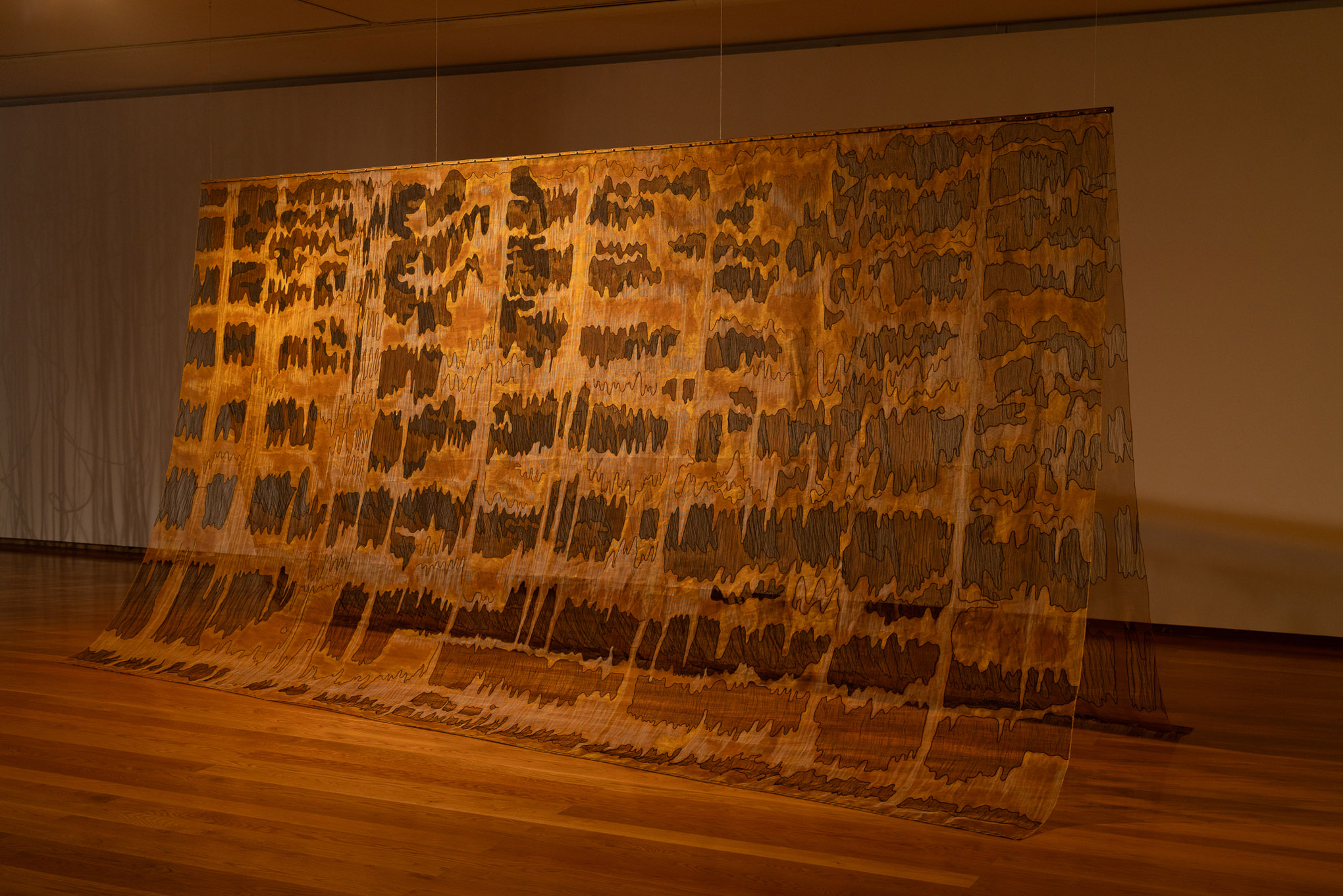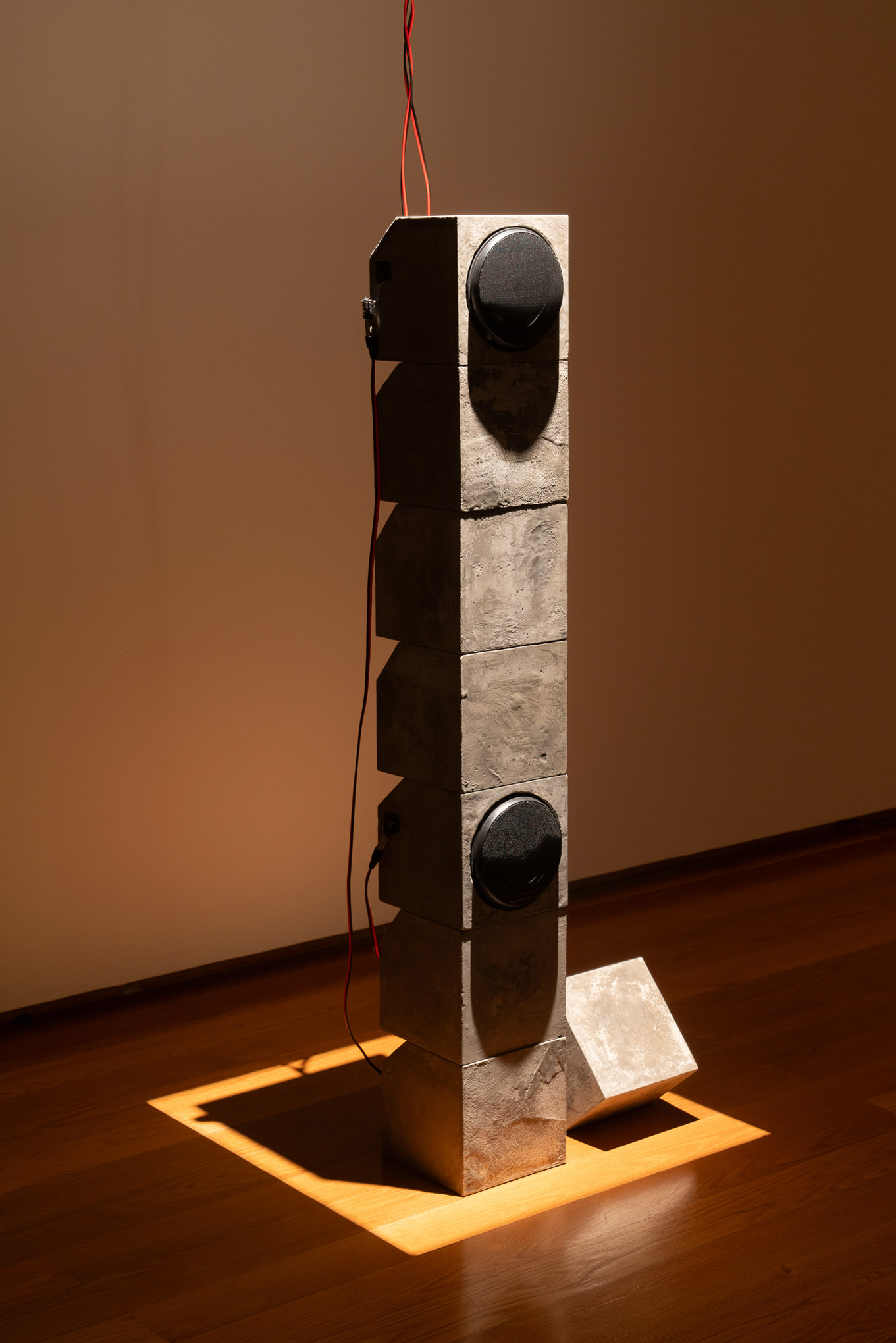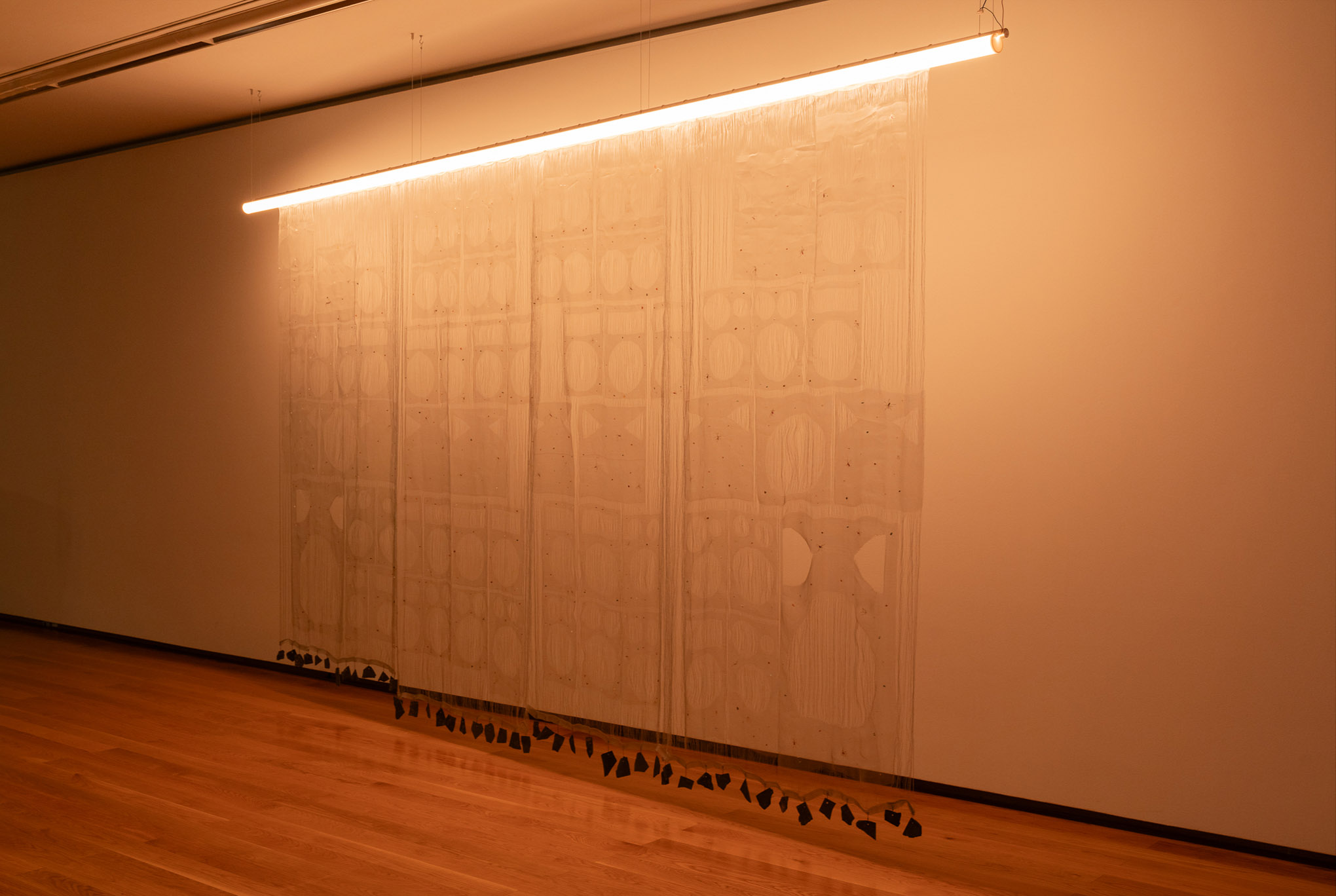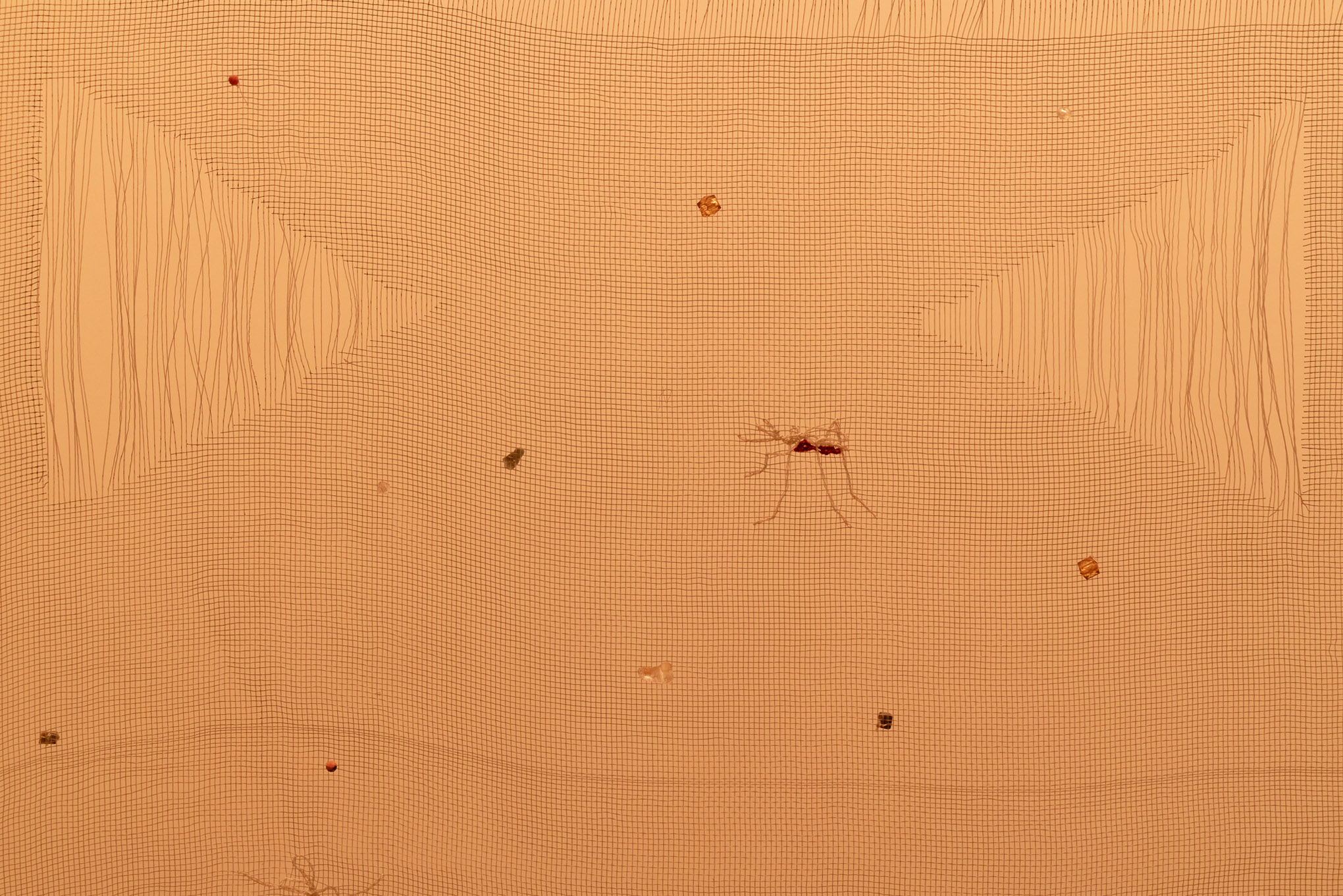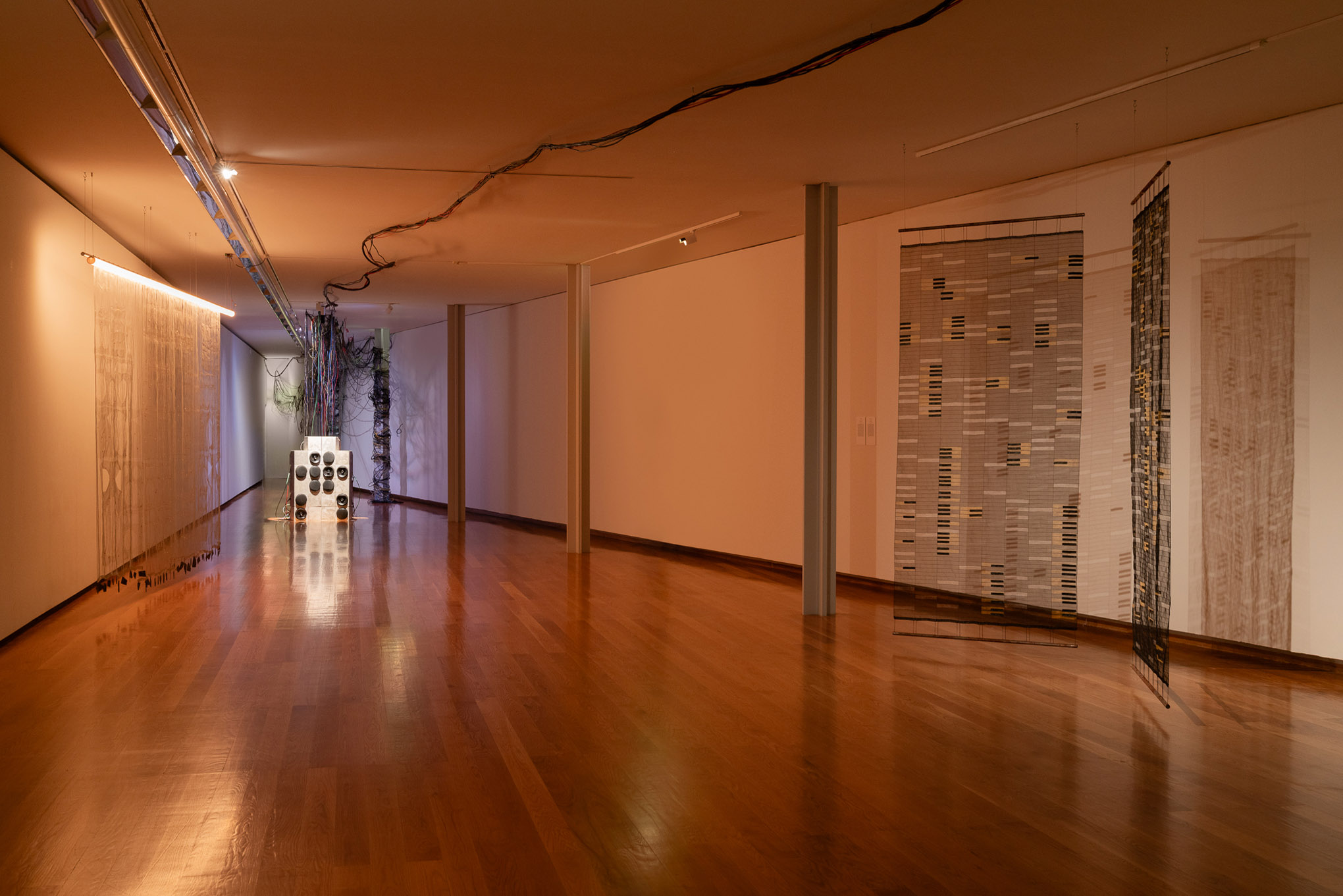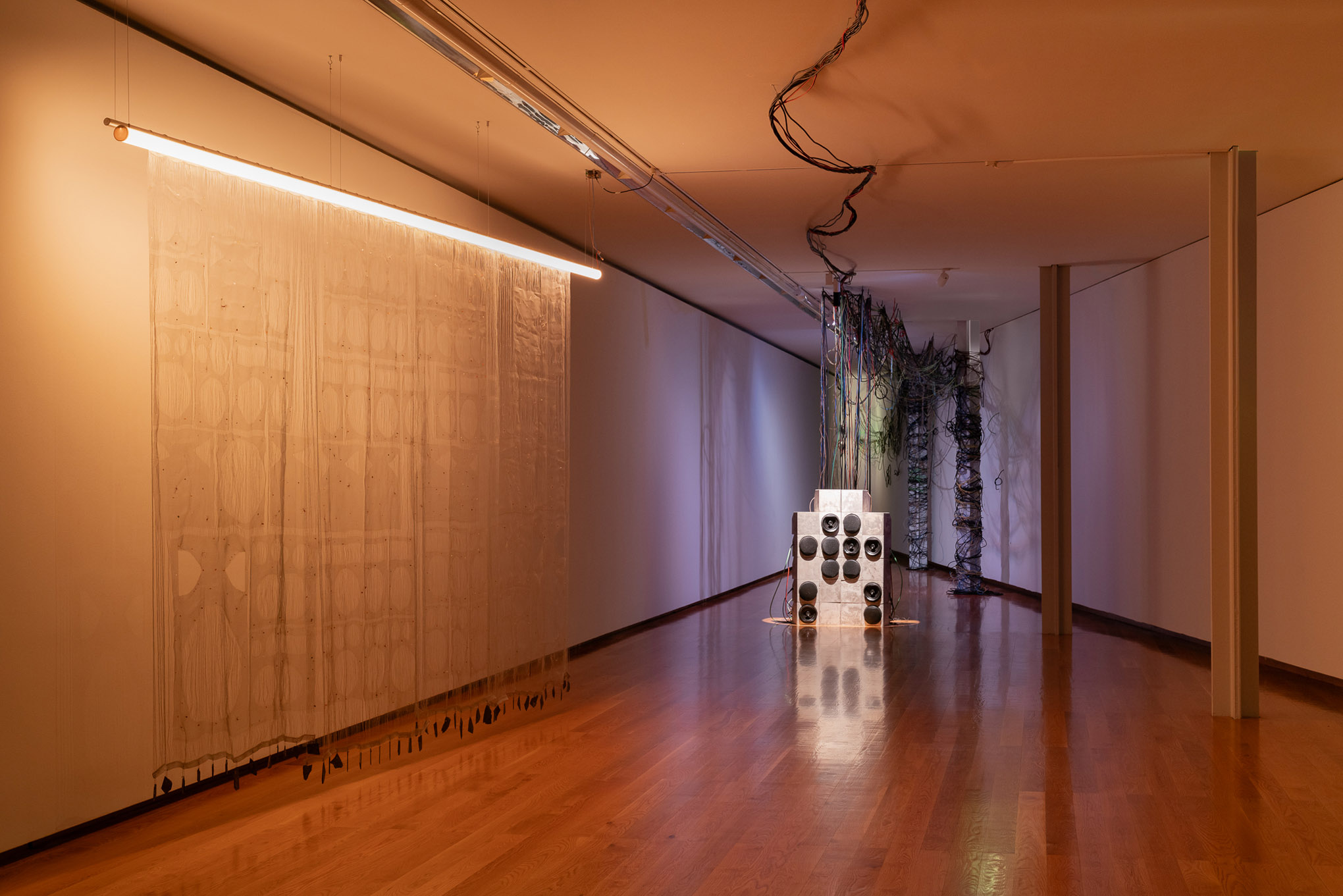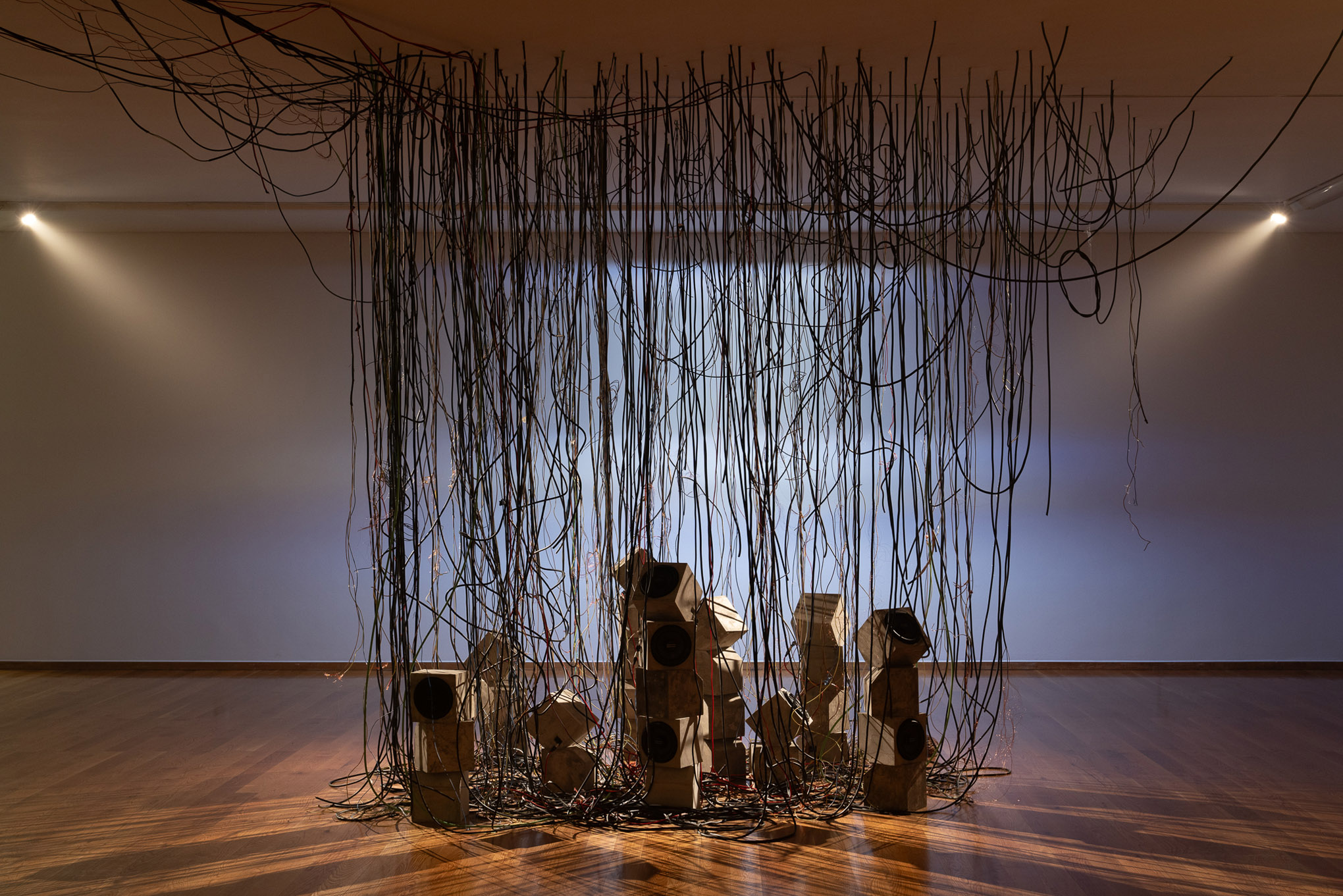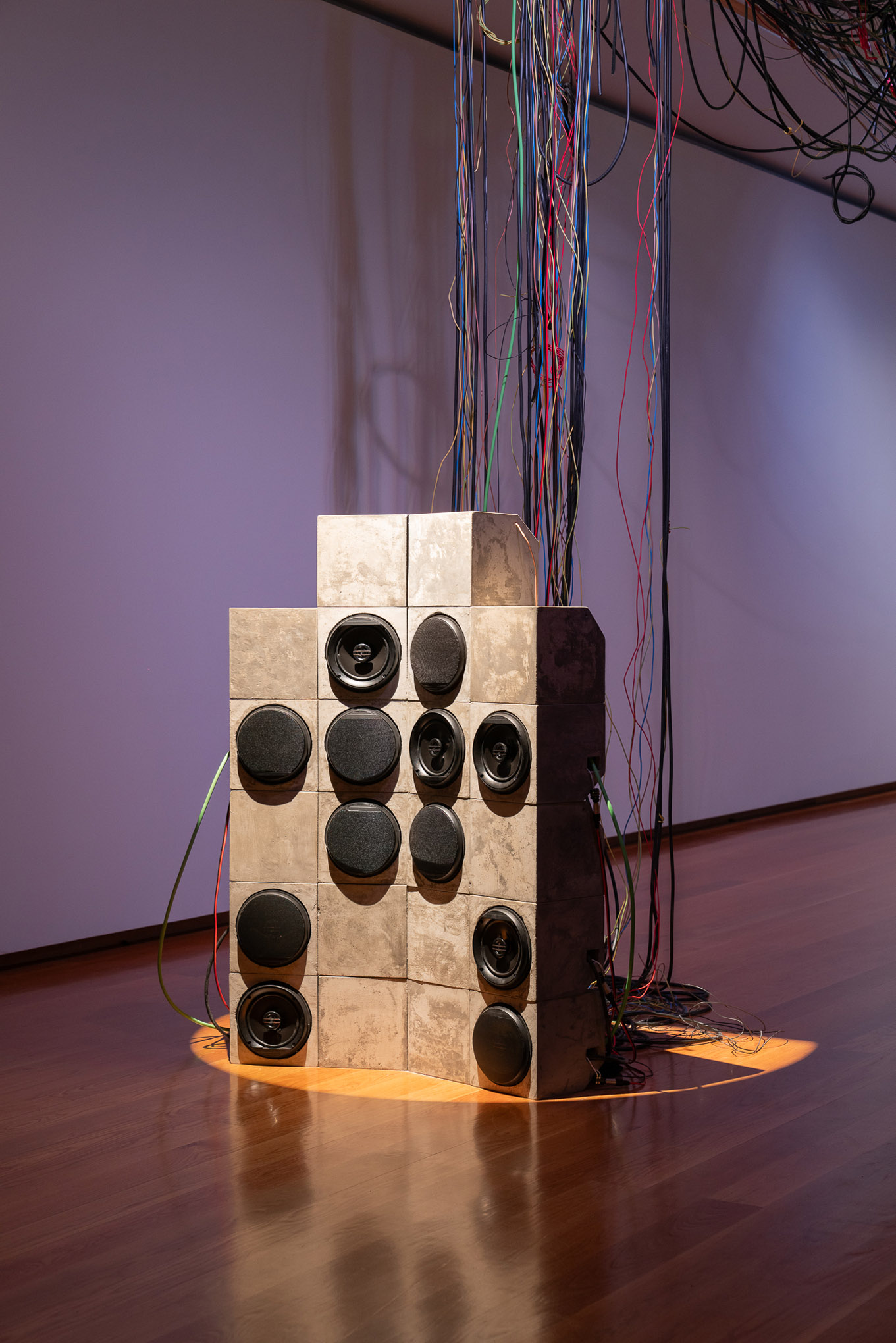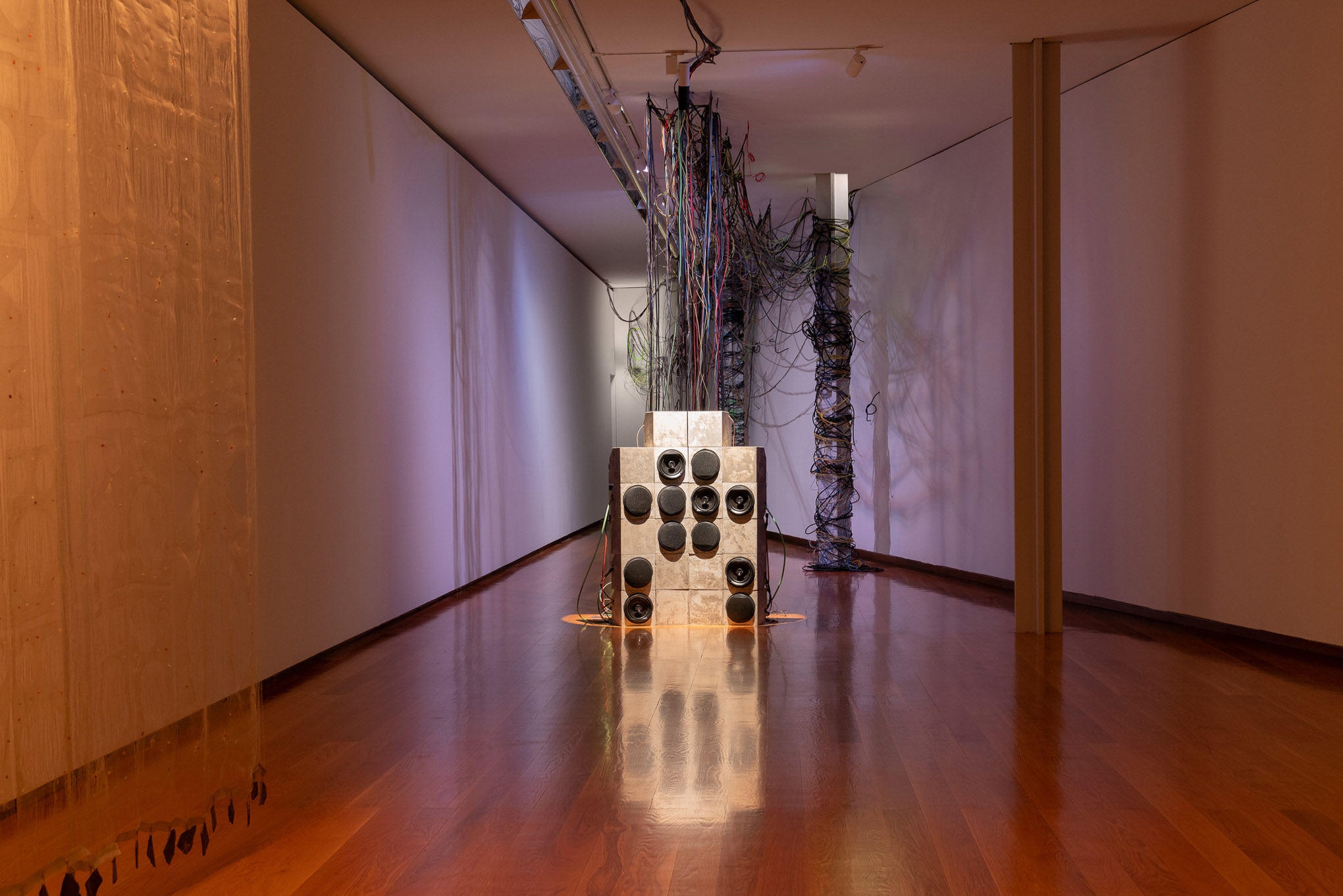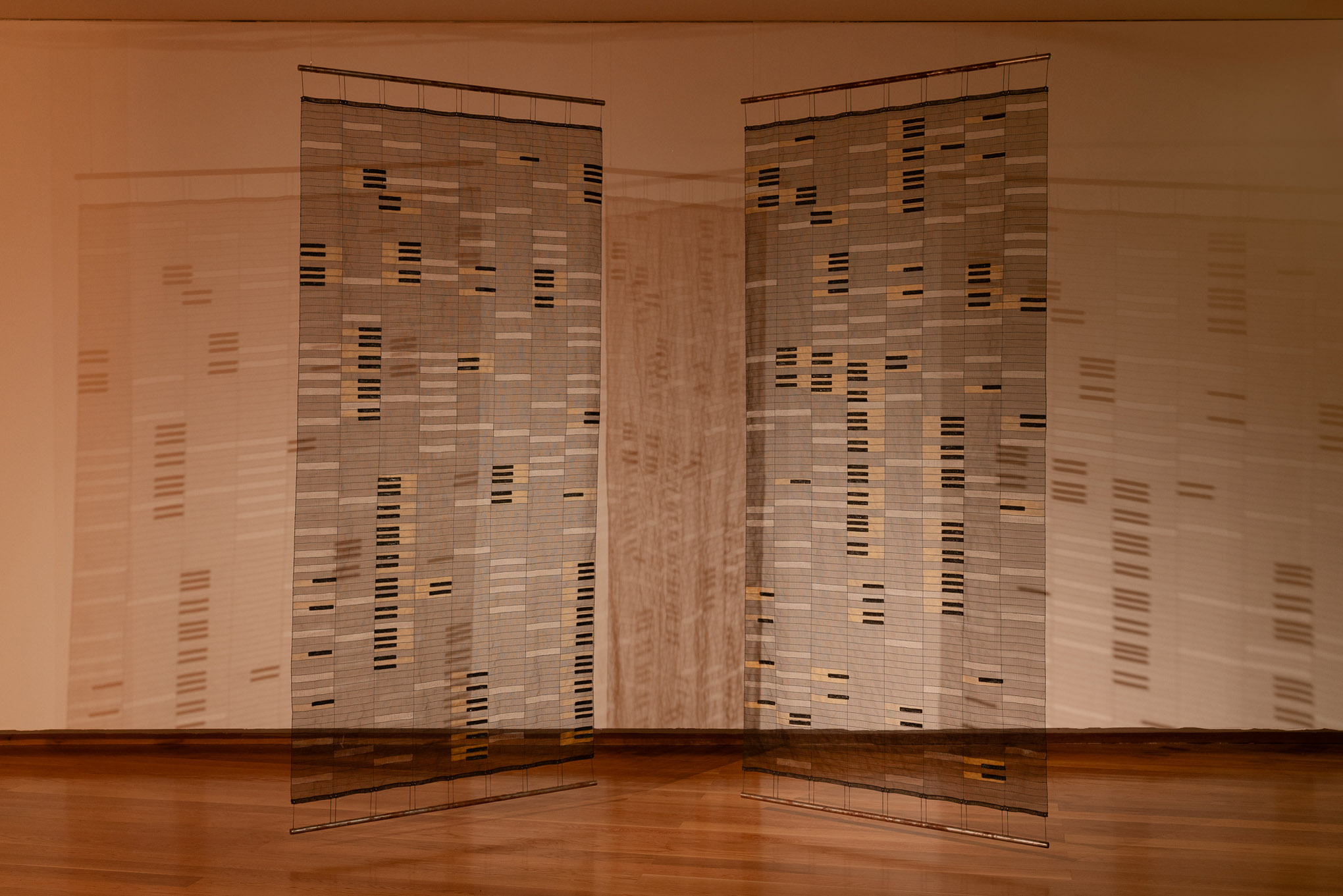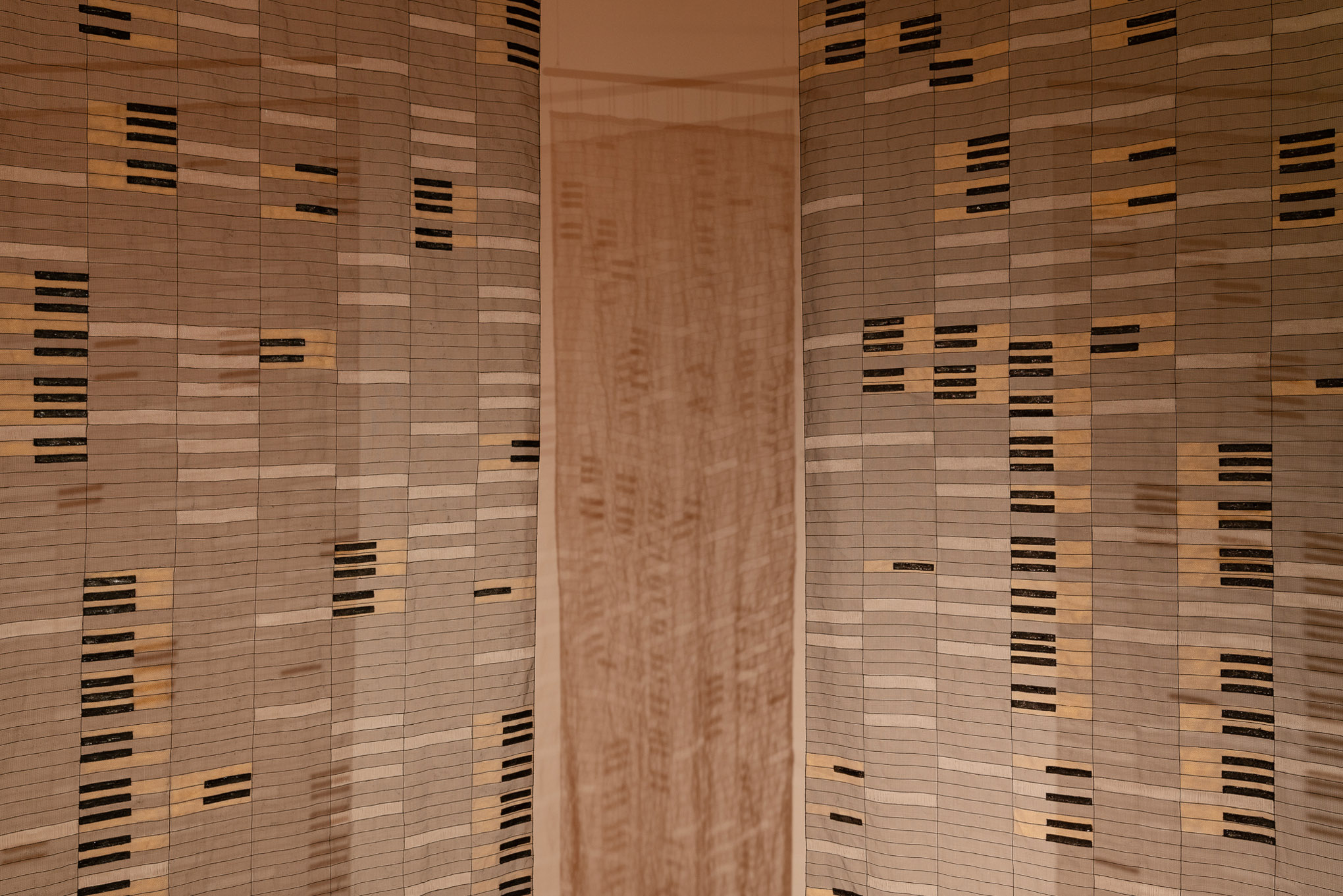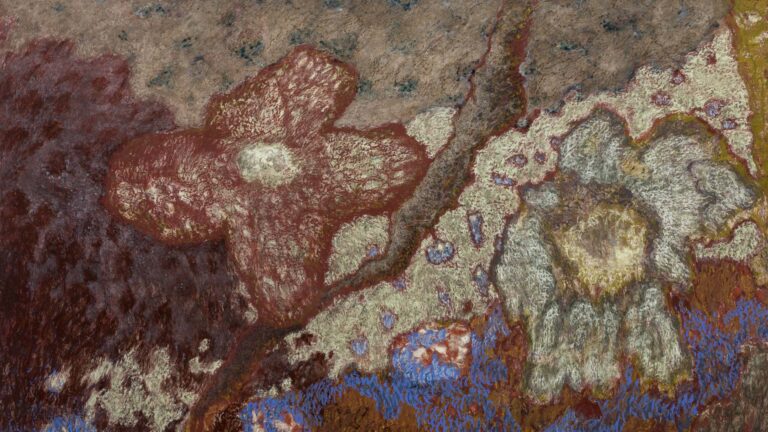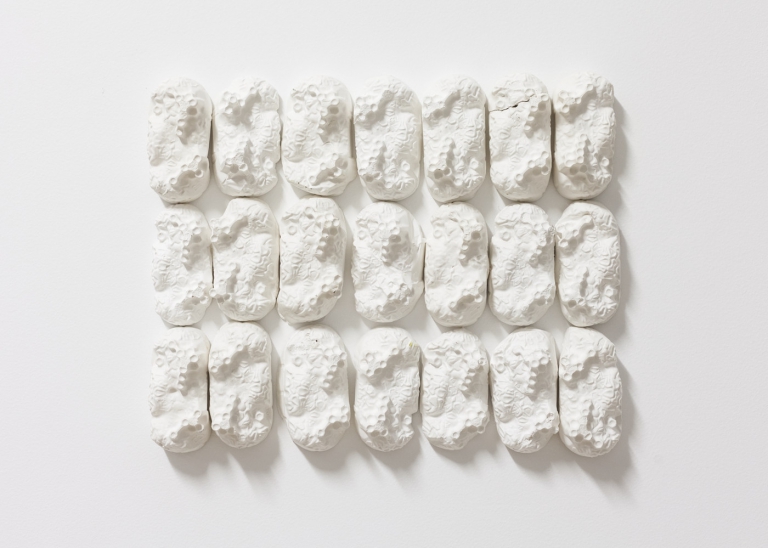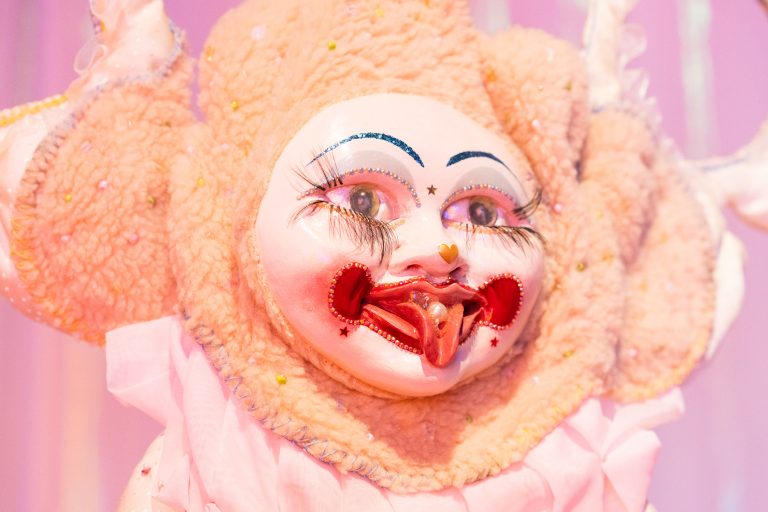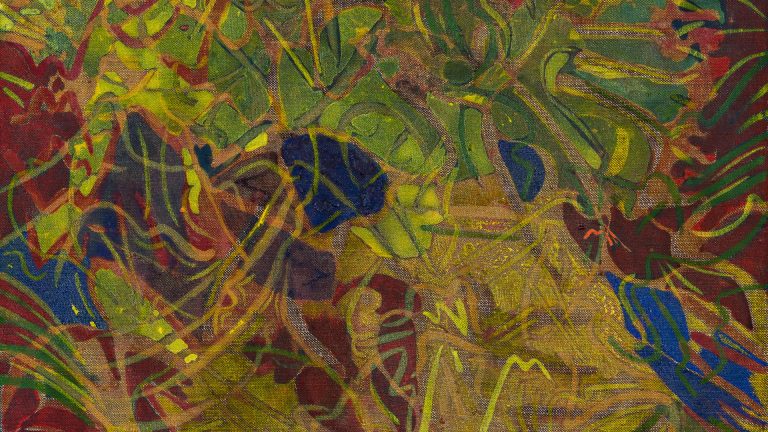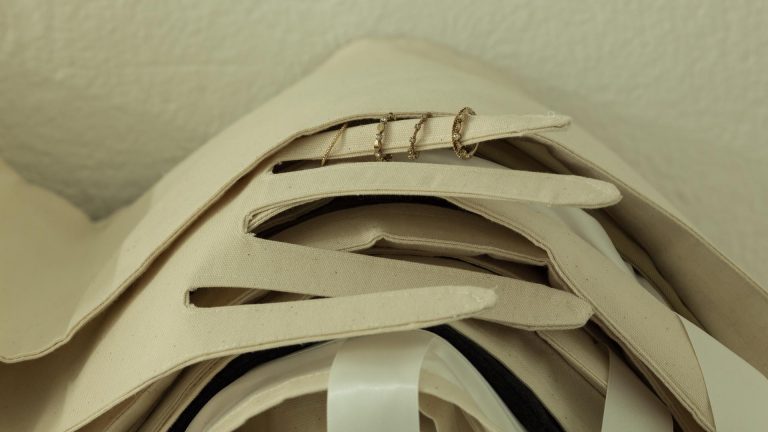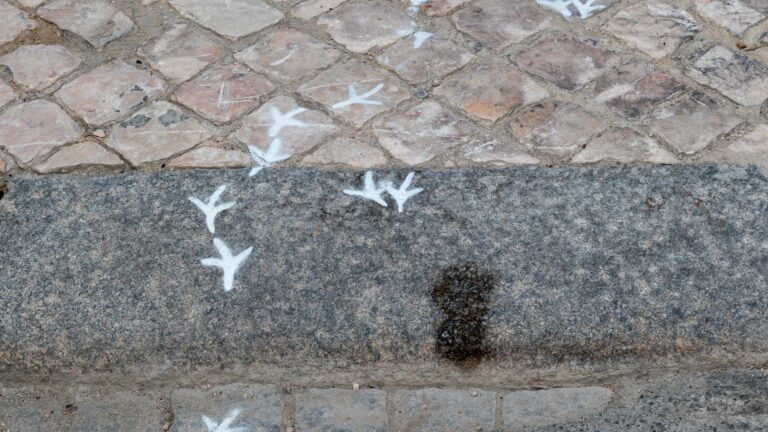Moving between tropical forests and urban jungles, Vivian Caccuri’s work builds ethereal and tangible acoustic landscapes, capable of fostering a transtemporal detour that will transport the audience to diverse and overlapping historical timeframes. We are summoned to listen to the ancestral sounds of almost invisible animals, such as mosquitoes, while at the same time embody creatures that have been affected by such animals over time, such as ourselves, human beings. Our senses are stimulated by music, or even the sounds that sometimes silently emanate from her installations, sculptures and textiles, and we are thereby encouraged to recognise imaginary spaces and react to the haptic and sound environment, that lies beyond standard and objective vision.
This is the Brazilian artist’s first solo exhibition in Portugal, in which she creates an atmosphere, rather than a simple installation; as if spectators will enter a dreamlike dimension, filled with more or less recognisable elements, in a continuous state of transformation. Electric cables function as climbing vines, textile panels as sound boxes or even as a piano keyboard, and tulle nets as mosquito tents, like those used by explorers in tropical jungles —hence the feverish atmosphere evoked by the title, expressed in the almost holographic lighting that Caccuri uses to endow three-dimensionality and movement to the bodies within the space. Inside the asymmetrical gallery where the show is held, fever is established as a hallucinatory state, a kind of supra-sensory portal that suspends the very idea of reality.
(Excerpt from the curatorial essay by Bernardo de Souza)
